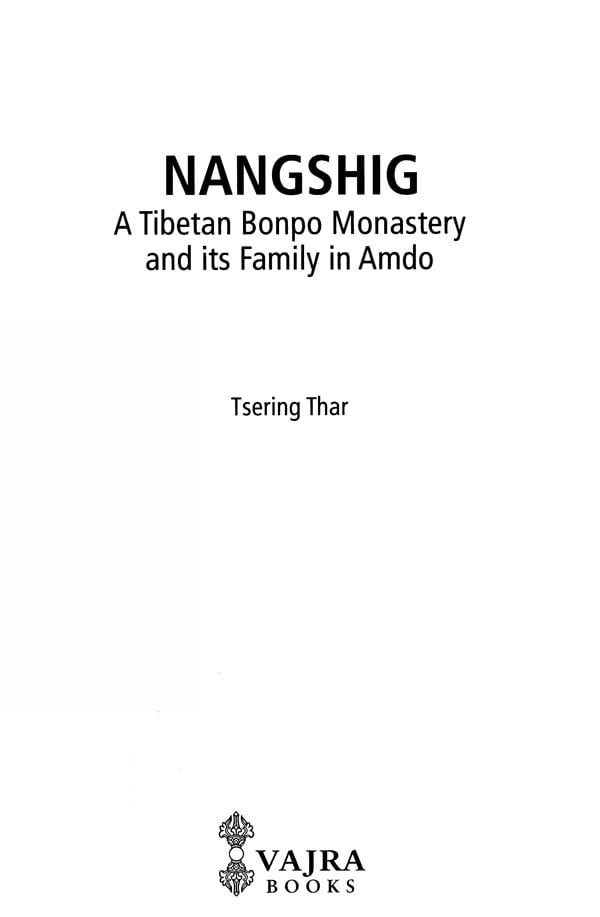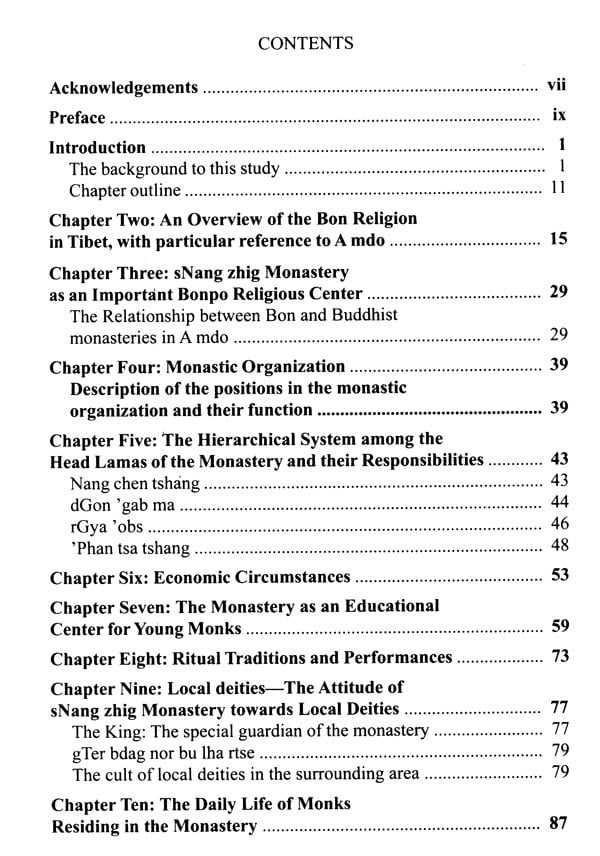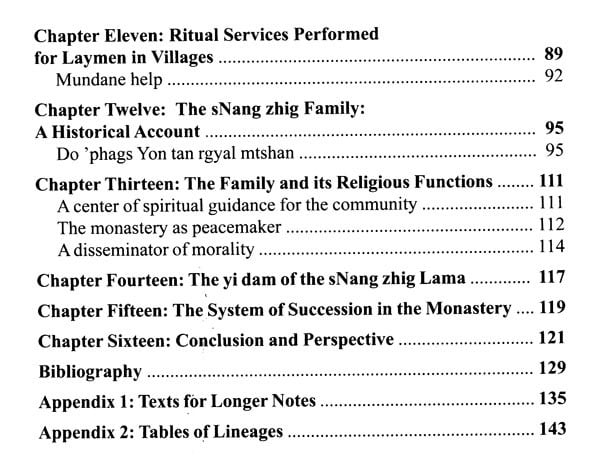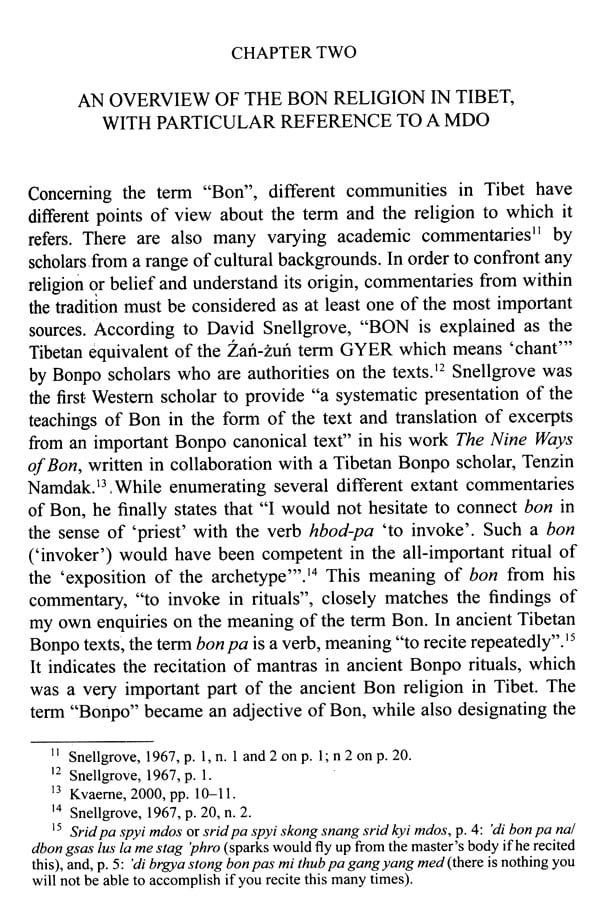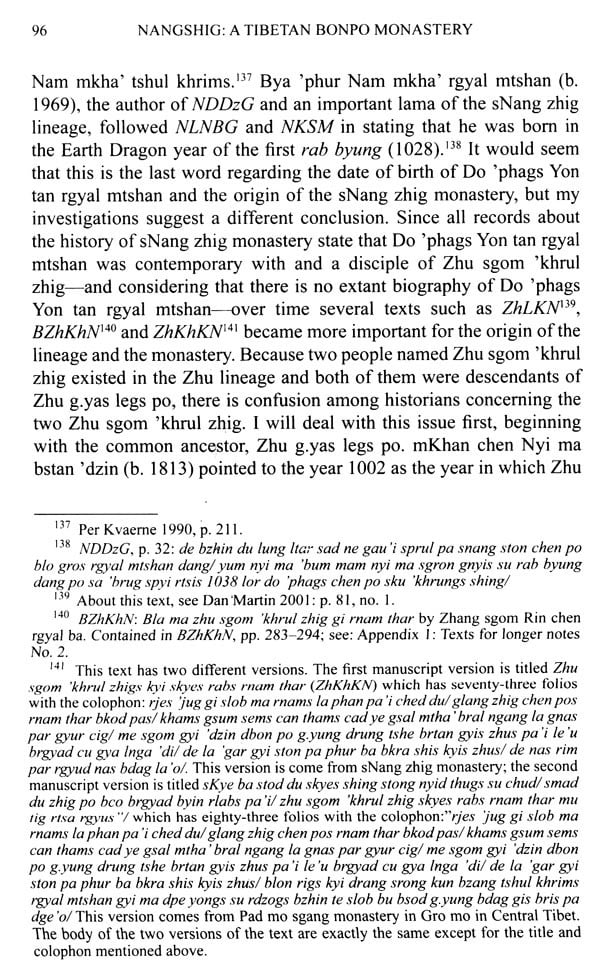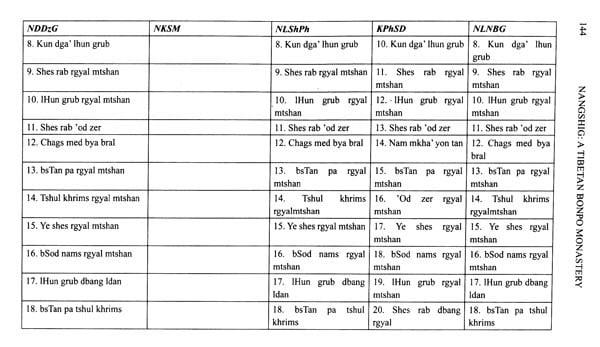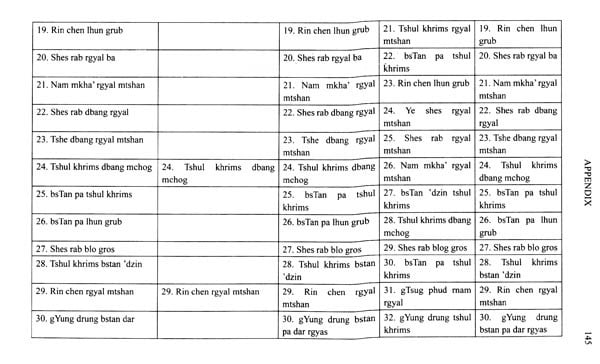About the Book IN THE ELEVENTH CENTURY a Bonpo master named Do 'phags Yon tan rgyal mtshan established a hermitage in the rNga khog region of eastern Tibet, corresponding to modern-day rNga ba (Chinese Aba) Tibetan Autonomous Prefecture in Sichuan Province. This hermitage was the nucleus of a religious center that would culmi nate, in 1168, in the foundation of Nangshig (sNang zhig) monastery, sNang zhig has survived centuries of sectarian rivalry and political uncertainty to become the largest Bonpo monastery in the entire Tibetan cultural region. The result of years of textual enquiry and field-based investigation by an eminent Tibetan scholar, this volume-the first monograph of a Bonpo monastery in the PRC-represents an important contribution to the cultural and religious history of Tibet.
Preface Bon is regarded as the pre-Buddhist religion of Tibet by the Bonpos as well as by Buddhist historians. By the term "pre-Buddhist here we mean that it existed in Tibet before Buddhism was imported into the country and that it has survived till the present day, even though it has inevitably been through much change with respect to its doctrines and practices. Although various definitions of Bon as a religion have been proposed, it could properly be said that, in Bonpo culture, we perceive something essential or basic that has pervaded Tibetan culture from ancient times to the present day. Bon is therefore an important cultural substratum in Tibet.
Unfortunately, however, the study of Bon culture has lagged far behind research on Buddhism. This tendency is salient all over the world. To improve this situation, we started a Bon culture research project in 1996 with funding for joint research from the National Museum of Eth nology, Osaka, Japan, and a subsidy from the Ministry of Education for overseas survey from the Japanese government. Most of these funds were allocated to the development of the groundwork for research, to the field survey of the actual conditions of Bon culture, to the sympo sium and to the publications of the research results.
Professor Tsering Thar, the author of the present volume, was a close partner in the China side of our project. One of the results of his exten sive fieldwork in Amdo was his work on sNang zhig Monastery. In this work he focused on the system of monastic organization and completed a detailed monograph on the subject. The current circumstances of the monastery and its ties with the locality and with the lay world as a whole have keenly interested scholars, but these matters are extremely difficult for non-Bonpos to approach.
Introduction The pluralistic cultural background of my family has effectively given me a balanced view of Tibetan religions, and my subjective attitude and method of research have directly affected the shape of the present work. I have quite a large family that includes followers of Bon as well as of the dGe lugs and rNying ma schools of Buddhism: my father, for example, came from a Bonpo family, but his mother was from a Buddhist milieu. Thanks to this cultural background, my inquiries in the monastery met with favour, because the monks identified with me as a fellow-Bonpo. And, as a researcher, I have paid close attention to Bon studies and attach considerable importance to the religion to acquire a fuller understanding Tibetan culture. For this reason, I have worked and published in the field of Bonpo culture for over fifteen years now, and many monks already know me from my publications on Bon in Tibetan. This has helped me to approach the monks and enabled them to collaborate with me in a relaxed way with my studies. Furthermore, as the result of the struggle between Bon and Buddhism for more than one thousand three hundred years, Bon, the indigenous religion of Tibet, has become a minor and weaker religion, whereas Buddhism, the external religion, has grown in strength. This development in the respective positions of the religions of Tibet has generated ideas that denigrate Bon and venerate Buddhism among most Tibetans. As a consequence, only a few Tibetan scholars acknowlege the importance of the Bon religion in Tibetan culture and society. The decline of Bon has not only meant a loss in the competition and struggle with Buddhists, it has resulted in the religion being perceived in a very negative way in traditional Tibetan society, and most Tibetan people consider Bon to be a misguided belief. To be a Bonpo means suffering discrimination from Tibetan Buddhists, who comprise the majority of the population. The situation is even worse in places where the Bon religion is not represented. In such places it is believed that one should not drink tea from a cup that has been used by a Bonpo, and that an individual on whom the shadow of a Bonpo falls will be condemned to rebirth in hell.
**Contents and Sample Pages**
